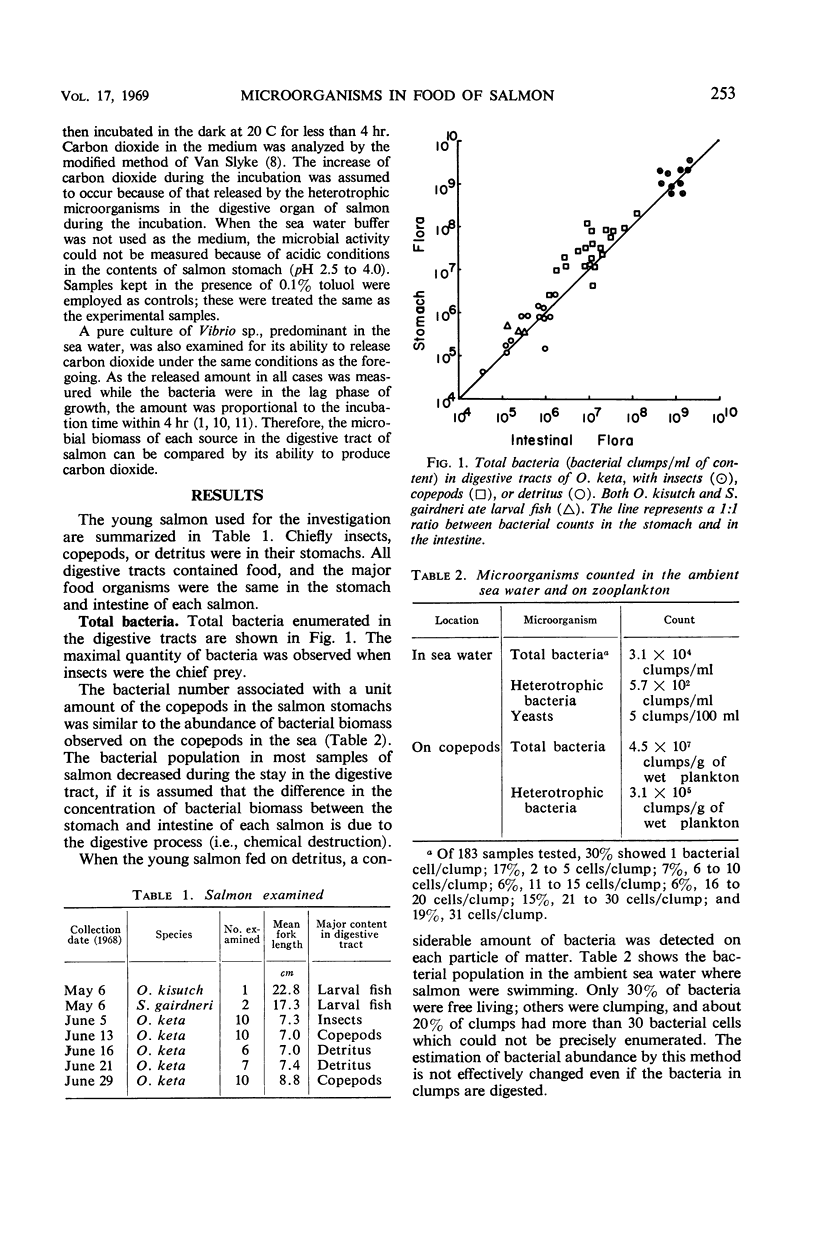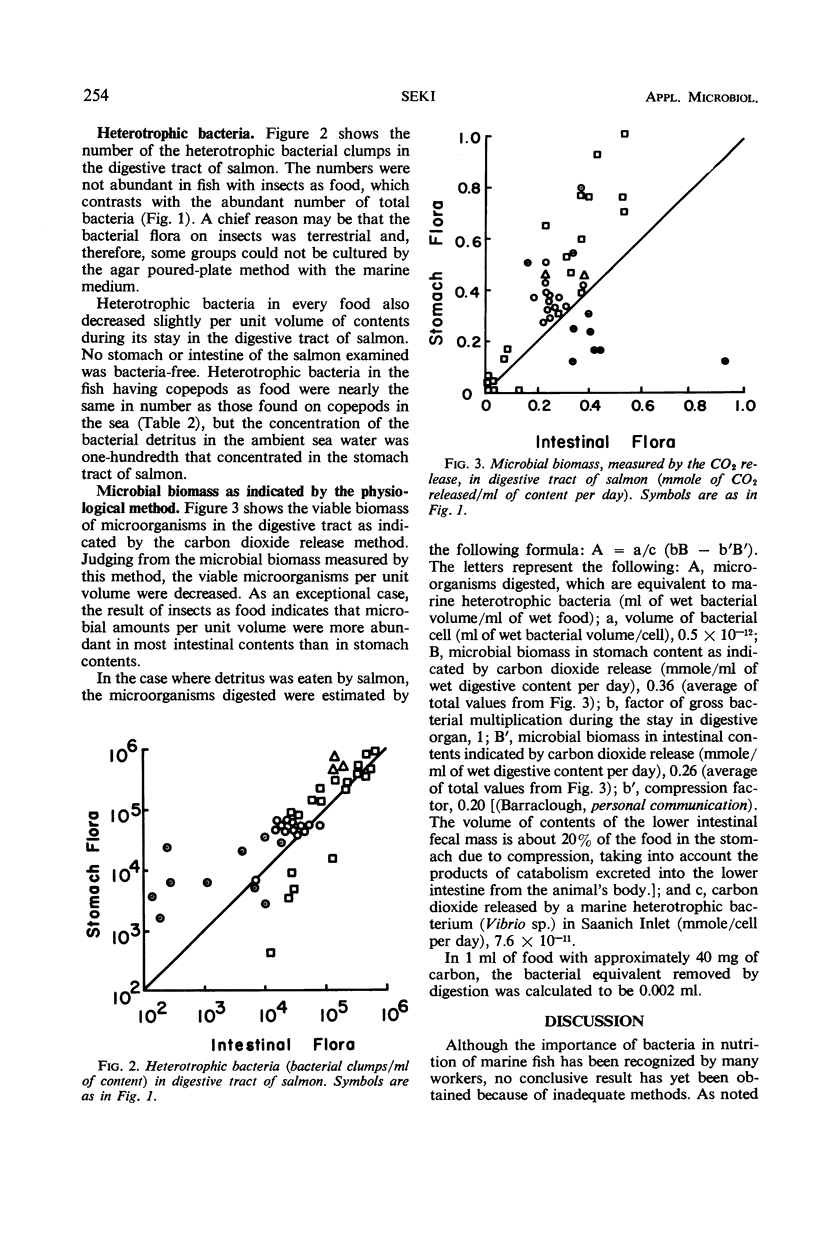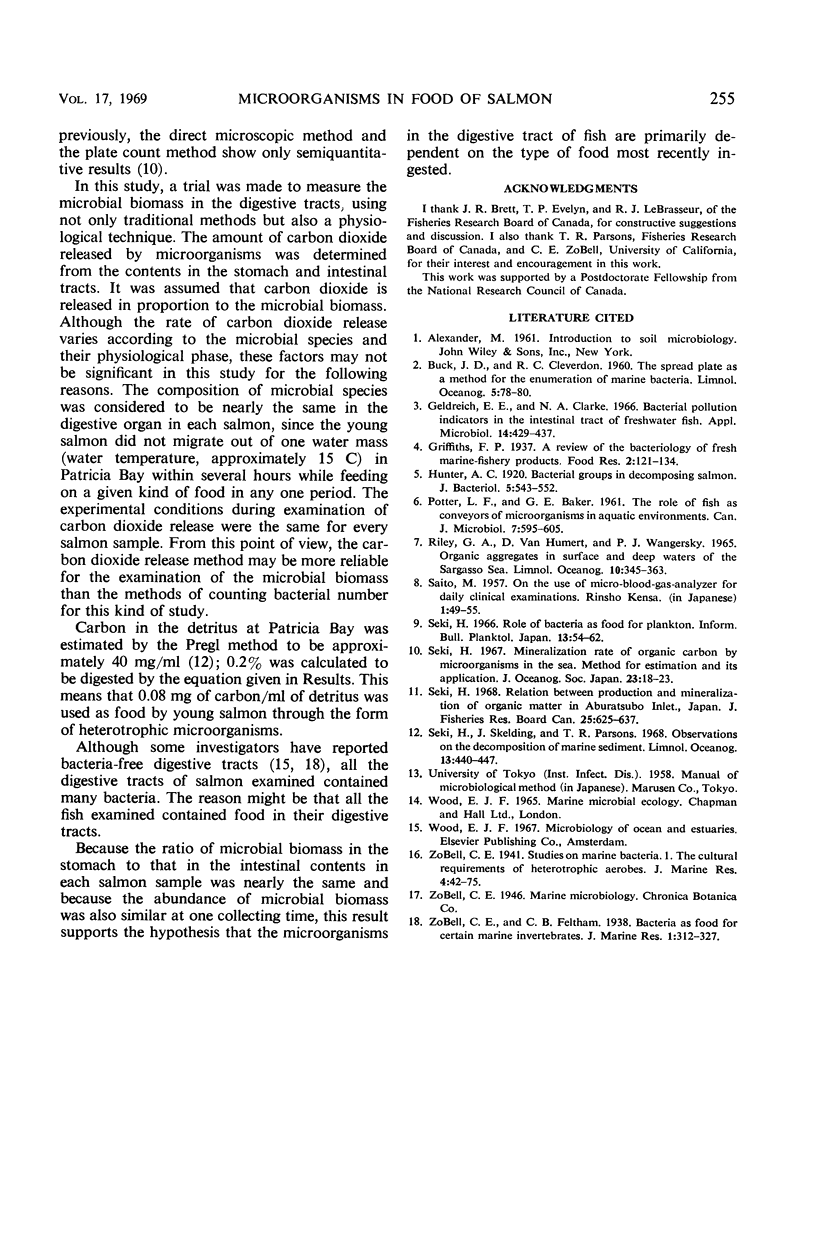Abstract
The biomass of microorganisms in the digestive tracts of young salmon in the sea of Saanich Inlet was examined by (i) the direct microscopic method, (ii) the plate count method and (iii) the physiological method (microbial biomass assumed from the release of carbon dioxide). By all methods, most microbial biomass in foods was shown to decrease during its stay in the digestive organ. This observation was supported by the detection of many bacteria at different stages of digestion. The microbial biomass was quantitatively influenced by the composition of food ingested and by the sampling time.
Full text
PDF



Selected References
These references are in PubMed. This may not be the complete list of references from this article.
- Geldreich E. E., Clarke N. A. Bacterial pollution indicators in the intestinal tract of freshwater fish. Appl Microbiol. 1966 May;14(3):429–437. doi: 10.1128/am.14.3.429-437.1966. [DOI] [PMC free article] [PubMed] [Google Scholar]
- Hunter A. C. Bacterial Groups in Decomposing Salmon. J Bacteriol. 1920 Nov;5(6):543–552. doi: 10.1128/jb.5.6.543-552.1920. [DOI] [PMC free article] [PubMed] [Google Scholar]
- POTTER L. F., BAKER G. E. The role of fish as conveyors of microorganisms in aquatic environments. Can J Microbiol. 1961 Aug;7:595–605. doi: 10.1139/m61-069. [DOI] [PubMed] [Google Scholar]


